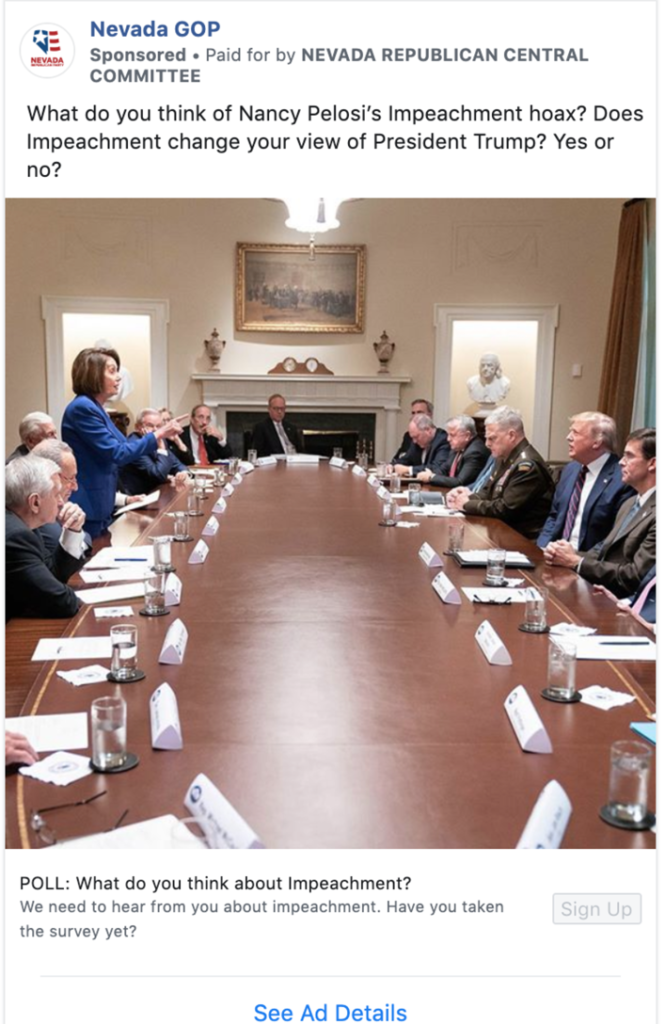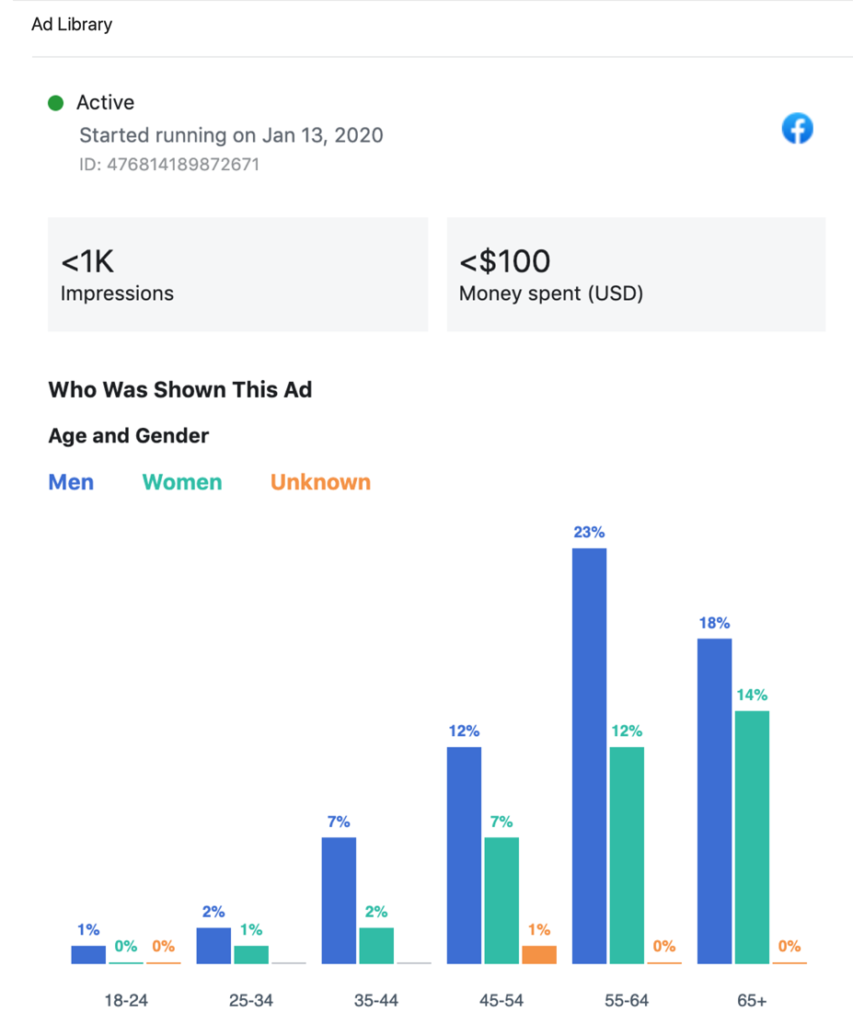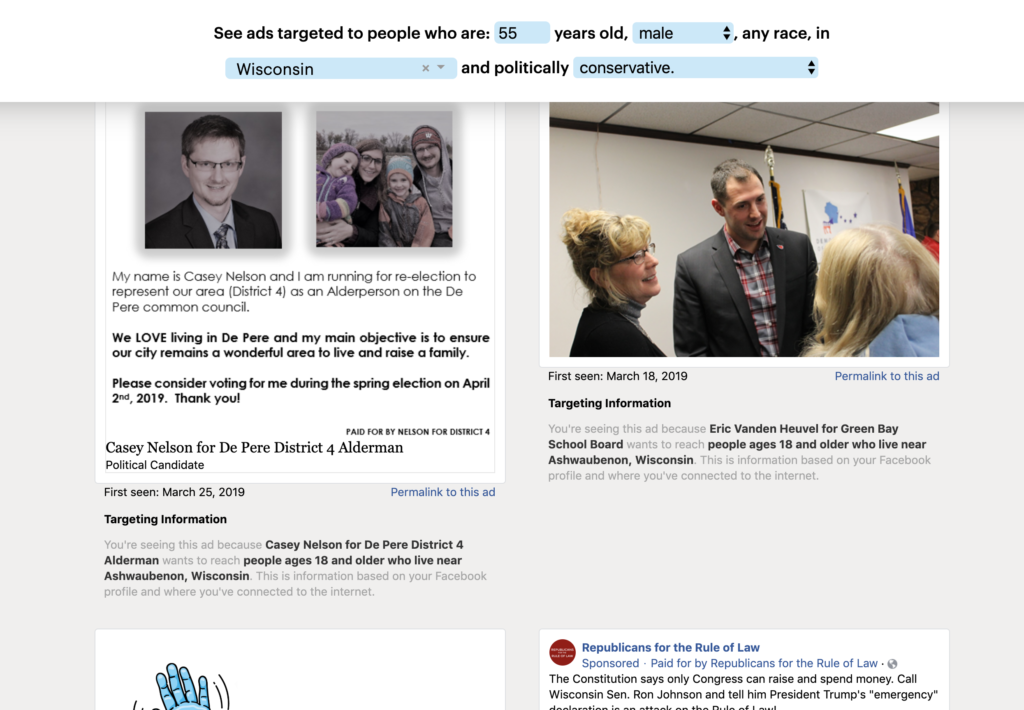This is the second of my two-part series on Facebook political ads. The first part addressed how you can determine why you are seeing certain political ads. Part one concerned the information about you that Facebook used to target you with a particular ad.
The second issue I wanted to address concerned the ads that I don’t see. I might hear about these ads from others, but the way I am categorized means that these ads don’t appear in my feed. More specifically, what interests me is how those sponsoring ads have categorized individuals they think will be influenced by a specific ad particularly if I think the ad is misleading. I understand that what I and you believe to be misleading can be a judgment call, but remember Facebook has indicated that it will not take down political ads known to be factually flawed. Facebook’s position (I am being charitable in my interpretation) is that ads can tell voters something about a candidate whether true or not and it is up to voters to address false ads. Of course, more complaining about fake ads on Facebook is more Facebook activity allowing more ads to be displayed, etc., etc.
What Facebook does do is to offer a database of ads and it is possible to examine active and inactive ads designated as political. So, I can scroll through the political ads that appear on Facebook and learn some things about the ad.
As I understand it, the database works like this. First, I locate an ad.

I then can examine the details Facebook shares regarding the ads. I can find who paid for the ad and determine some things about who sees the ad.


I am not told exactly how the purchasing organization targeted the ad. I can make some guesses from the data provided, but other factors could also be responsible (e.g., who has a Facebook account). It makes sense only Nevada residents saw this ad. It was purchased by the Nevada GOP. Why are mostly older viewers and more men than women viewing this ad? Is this a function of who uses Facebook (not likely) or something more specific in the targeting.
It is possible that Facebook reveals more about targeting, but I could not find anything in the database. So, based on what I have found from my exploration of Facebook ads, I can learn much more about why I see a specific ad than why others see that ad.
I have found some other things related to political ads that are worth considering. In 2018, ProPublica was asking similar questions to those I raise here. They created their own database of ads based on an app used by volunteers and using information about the volunteers attempted to determine why individuals say what they saw. This service and chrome extension are still operational leading me to accept my own interpretation of the state of affairs with ad targeting data (individuals can determine how they are targeted, but not necessarily how ads for others are categorized).
You can use the data ProPublica has collected to identify ads aimed at what its methodology (see above) suggests are the targeting variables. The following image suggests how this tool works. While I am experimenting with the Chrome extension to provide data, I don’t think you have to use the extension to view the data collected. For my example, I selected ads that appear to target males who are over 55 and conservative living in Wisconsin.

P.S. – please comment if Facebook shares more data on political targeting than I have discovered.

You must be logged in to post a comment.